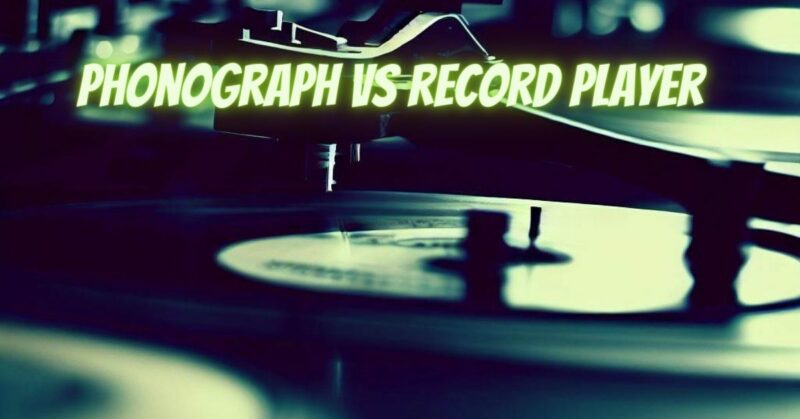In the world of audio playback, the terms “phonograph” and “record player” are often used interchangeably, leading to confusion about their distinctions. While both devices share the purpose of playing vinyl records, they have key differences in terms of technology, design, and historical context. In this article, we will delve into the dissimilarities between phonographs and record players, shedding light on their unique characteristics and evolution.
- Historical Background:
Phonograph: The phonograph is an early sound-reproducing device invented by Thomas Edison in 1877. It utilized a rotating cylinder with grooves, where a stylus would follow the grooves and reproduce the recorded sound. Early phonographs were primarily mechanical in nature and required hand-cranking for operation.
Record Player: The term “record player” emerged later, referring to audio playback devices that came into prominence during the mid-20th century. Record players used flat, circular discs with spiral grooves, known as vinyl records, which replaced the cylinder format of phonographs. These devices evolved to incorporate electrical components, such as electric motors, amplifiers, and speakers.
- Technology:
Phonograph: Phonographs were entirely mechanical in their earliest iterations. The sound was mechanically captured and reproduced using a stylus that physically traced the grooves on a rotating cylinder. Later advancements introduced electrical amplification to enhance the volume and fidelity of the sound.
Record Player: Record players utilize electrical components to amplify and reproduce sound. They feature an electric motor that spins the turntable at a consistent speed, allowing a stylus to track the grooves of a vinyl record. Electrical signals from the stylus are sent through a cartridge and converted into sound waves by a built-in amplifier. Record players often include integrated speakers for convenient standalone playback.
- Design:
Phonograph: Phonographs typically feature a horn or speaker cone, which acts as an acoustic amplifier to project sound. The stylus was attached to a tonearm, which could be manually adjusted for tracking and playback. Phonographs often had an intricate and ornate appearance, reflecting the craftsmanship of the era.
Record Player: Record players have a more streamlined and compact design. They consist of a platter or turntable that holds the vinyl record, a tonearm with a removable cartridge and stylus, and various control mechanisms for speed adjustment, tone control, and playback functions. The overall aesthetic of record players has evolved to align with contemporary design trends.
- Contemporary Usage:
Phonograph: Phonographs are primarily seen as historical artifacts or collector’s items. Modern reproductions of vintage phonographs exist, appealing to those seeking a nostalgic experience or aesthetic. However, they are not commonly used for regular vinyl playback.
Record Player: Record players are widely used today as a popular means of playing vinyl records. They come in various styles, sizes, and price ranges, catering to different needs and preferences. Modern record players often integrate additional features such as USB connectivity for digitization or Bluetooth capabilities for wireless audio streaming.
| Feature | Phonograph | Record Player |
|---|---|---|
| Definition | A device that can play recorded sound | A specific type of phonograph that is designed to play vinyl records |
| History | First invented by Thomas Edison in 1877 | Developed in the early 1900s |
| Design | Simpler design | More sophisticated design |
| Features | May not have built-in amplifiers or speakers | Often has built-in amplifiers and speakers |
| Sound quality | May not be as good as a record player | Can be very good |
Conclusion:
While both phonographs and record players serve the purpose of playing vinyl records, they differ significantly in terms of historical context, technology, design, and contemporary usage. Phonographs represent the early mechanical sound-reproducing devices, often associated with a nostalgic and vintage aesthetic. On the other hand, record players have evolved with electrical components, improved audio fidelity, and convenient features to cater to the modern vinyl enthusiast. Understanding the distinctions between phonographs and record players helps clarify their unique contributions to the history and evolution of audio playback technology.

